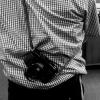What are your favorite settings?
-
Similar Content
-
Posts
-
Is there a way to keep your menu selection on the last option you used? For example. When I select MENU the cursor defaults to MY Menu. I scroll up to IQ settings, make a change, and return to shooting. When I press the MENU button again the cursor is back to MY Menu. I really want it to stay on the IQ setting I was last using (or any other Menu setting). It's a PITA to keep scrolling up and down, back to the previous setting. (Note. My Canon Menu retains the position of the last option I was using). Thanks in advance for any help.
-
Welcome, dear visitor! As registered member you'd see an image here…
Simply register for free here – We are always happy to welcome new members!
-
Im not partal to any brad, just opted to try these based on apparent price / performance. I'm always looking for best bang per buck, hence Fuji I guess - haha Reliabilty does not concern me, as I always shoot to two cards for pro work (and burst shooting is not a part of that). Made sense for me to get the cheapest / fastest CF cards for hobby shooting. I just got a Sabrent Rocket V60 512GB cheep (as the back-up card). As long as neither of these freeze the camera I hope its a cheep solution for my needs. (AB AV Pro SE 512Gb and Sabrent Rocket V60 512GB). Half a gig of redunat storge for $200USD is something I can live with. (Especially considering I can bust the hell out of the Anglebird). Cheers, Tomek
-
Would using an external charger be of benefit to the batteries life? I appreace it can be faster, but I doin't mind pluging in the camera over USB to charge. Does charging via the camera do as good a job as lets say the fuji's own external charger? Does the camera stop charging once the battry is full and not over charge? I couldn't find these deatails in these forums or in the manual. Thank you! Image below shot on X-T2 in a sunny studio.
Welcome, dear visitor! As registered member you'd see an image here…
Simply register for free here – We are always happy to welcome new members!
-
It is really easy to find out if the wifi is on. Your computer or tablet or cell phone will have a network settings dealing with wifi, bluetooth, ethernet or “other”. Open that up and go into the section for wifi, and take note of which networks are listed. Turn on the camera and keep watching the list of networks. If your camera’s wifi is turned on, a new network should suddenly show up in your computer/tablet/phone’s network listings. Now go into the camera’s menus and start a wireless connection (the x-app or camera remote app can help you with this). You should see a network show up now. It is not hidden because it has to be visible so that your computer/tablet/phone can join the camera’s network to transfer images. Turn the camera off and that network should disappear. Turn the camera back on and see what happens.
-



Recommended Posts
Join the conversation
You can post now and register later. If you have an account, sign in now to post with your account.
Note: Your post will require moderator approval before it will be visible.